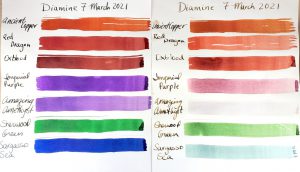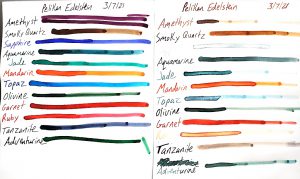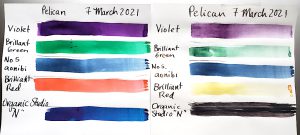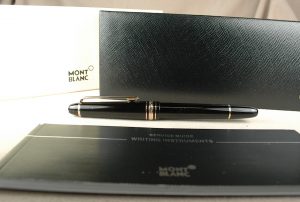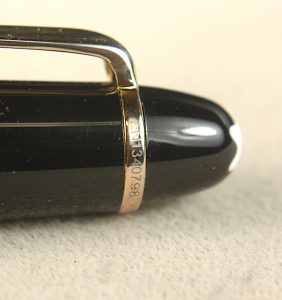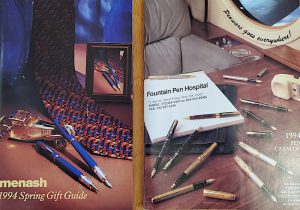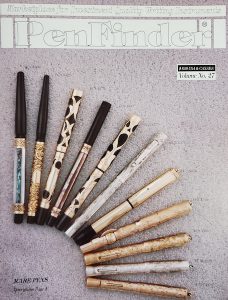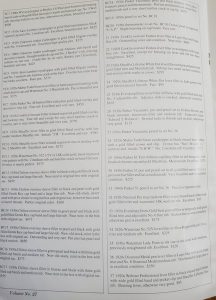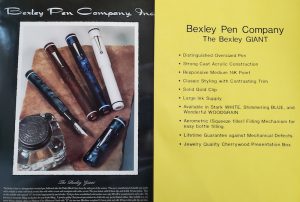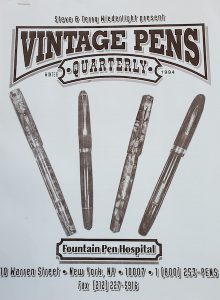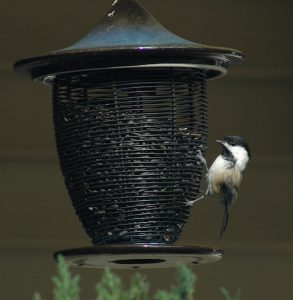
Peanut
Scurrying into the town of Mouseville, a little grey traveler named Erasmus visited in hopes of seeking shelter from the rain.
Yet, on the streets Mouseville, between the basement and first floor of a century-old Sears Craftsman home, all was not well. Oh sure, there were the happy signs of chewed on wood debris and droppings everywhere, but the residents of Mouseville were in a nervous panic.
“What is wrong?” asked Erasmus, when he encountered a larger brown-and-white field mouse named Esther. “Why is everyone so upset.”
“It is the God of Carnage,” the trembling mouse replied. “He killed Aloysius early this morning.”
“Forgive me,” Erasmus said. “I just came to town. I have never heard of a God of Carnage before.”
“What?! How can that be?” asked Esther. “His savagery is epic. He is huge and vicious. He has large white fangs and razor-sharp claws. He is so terrifying that he doesn’t even camouflage. He wears a coat of tan fur, and his pale green eyes look right through you as he tears you to pieces.”
“Does this God of Carnage have a furry tail?” Erasmus asked.
“Yes,” replied Esther.
“Does your God of Carnage make an ear-shattering cry of death that sounds like this, ‘Meow’?” Erasmus asked.
“Yes,” Esther said. “You do know our God of Carnage.”
“I think it is just a cat,” Erasmus explained, confident his big city mouse experiences were more than these simple country mice were used to. “It is not a god, though they do think highly of themselves. Cats are just predators who happen to feed on mice and birds. They are pretty predictable, really.”

God of Carnage
“Mark my words, Stranger,” stated Atticus, who was a sleek black mouse that overheard their conversation. “The God of Carnage is no mere cat. He has never eaten a mouse. He is fed by his gargantuan servants, whom he himself has trained, something called Fancy Feast. It is a vile meat purée whose sickening stench alerts us to when he is near.”
“BUT,” nervously squeaked Wilhelmina, “Once he has consumed the Fancy Feast, he is sleepy and less apt to torment us.”
“Guys,” Erasmus laughed. “I’m even more convinced now that this is just a cat and not a god at all. They are pretty common. Trust me, I’ve encountered many in my travels.”
“Would a cat hold you down by the tail and slowly stick his claws in you, just to listen to you squeal before you die?” asked Esther, trying to trip up Erasmus.
“Yes,” he replied.
“But then he wouldn’t eat you…just leave your corpse in the shoe of one of his servants who must have displeased him,” Esther probed further.
“Yep. That’s pretty catlike,” Erasmus said, rolling his eyes at their simplistic nature.
“Would a cat play catch with your limp body?” Wilhelmina asked. “Tossing you into the air with his mouth only to catch you and grind you with his teeth until you ceased to try escaping and withered away in his jaws, only to leave you on his servants’ bed to reprimand them?”
“Uh-huh,” Erasmus nonchalantly affirmed.
“What about drowning?” inquired Atticus. “Aloysius did nothing to disturb or offend the God of Carnage. He simply saw a sunflower seed on the floor and raced to get it and return to Mouseville to eat it. Yet, the God of Carnage pounced from thin air and captured Aloysius. As Aloysius begged for his life, the God of Carnage didn’t even bite him. He held Aloysius down in a bowl of water until he ceased to struggle and fight for air. Then he plopped poor bloated Aloysius into the bowl usually left for Fancy Feast and walked away.”
“That does sound unnecessarily cruel,” Erasmus said, “But, I wouldn’t put such behavior beyond a mortal cat.”
“Have you slain such a creature, as you call, a cat?” Atticus asked.
“Oh, God, no,” Erasmus said, losing his patience with these country mice. “They are too big and deadly. I just try to steer clear of them. Haven’t you simpletons ever been taught to practice S.L.R.?”
“We have not heard of your magic,” answered Wilhelmina. “All we can do is pray to the great God of Carnage not to sacrifice us for his amusement.”
“Sniff. Look. Run,” Erasmus explained. “It isn’t magic. I’ll show you. Is that sunflower seed still out there?”
“No, Stranger,” Esther said. “Do not throw away your life. Do not tempt the Great God of Carnage.”
“Look,” Erasmus said. “Cats aren’t that bright. Let me show you how it is done.”
The mice led Erasmus to the hole under the oven in the kitchen. “There lie the bowls of this morning’s tragedy,” said one of the mice.
Erasmus crawled to the edge of the stove’s protection. “First you sniff the air for any sign of cat. Then you look to the left and the right for any sign of cats. When it is all clear, you run as fast as you can.”
Erasmus scurried quickly for the seed he saw on the floor.
Then…BAM!
He felt the weight of the cat flatten him to the floor.
Recovering from his leap off the counters, which his owners would have been angry about if they knew he was on the counters, the cat briefly let the mouse go.
Yet, Erasmus was too stunned to move. The other mice under the stove shrieked and began praying fervently for Erasmus’ release.
The cat held the recovering mouse with one of his back paws, as he used a front paw to lick and groom himself. He didn’t want to appear slovenly for his new playmate.
“Would you like to play with me?” the wheat-colored mini panther asked.
“Play?” Erasmus questioned.
“I’m bored,” the God of Carnage said. “My humans go to this thing called ‘work’ and leave me with nothing to do.”
“I thought you were the merciless great God of Carnage,” Erasmus said, then looked to the other mice as if to say, “Ya see, I told you so.”
“My name is Peanut. What is your’s?”
Erasmus began laughing as he’d never laughed before. It was a deep, uncontrolled laughter.
“What is so funny, new playmate?” the cat asked.
“P. P. Pea-nut!” The little mouse couldn’t stop laughing. “Ya-ya you are.”
The mouse laughed some more.
“Why am I so funny?” Peanut asked, perturbed by this mouse’s laughter.
“Don’t you know what a peanut is, you idiot,” the haughty mouse kept laughing. “It is a diminutive little legume that people eat at baseball games.”
More gales of mouse laughter.
“Why, you nincompoop!” Erasmus kept laughing. “You’re no God of Carnage. You’re a peanut.”
With that, Peanut bit off the impudent little mouse’s head and tossed it toward the cowering rodents under the stove.
The mice began to pray, “Oh, Great God of Carnage, be merciful!”
“That’s better,” Peanut said, strutting toward the sunny couch in the next room. “I’m going to take a nap. Try not to disturb me, or you’ll suffer a worse fate.”
Once Peanut had left the room, Esther said, “Is it just me, or do you think that Erasmus character talked way too much.”
“I thought he’d never shut-up,” Wilhelmina agreed.
“Good riddance,” Esther said. “Two newcomers in one day ought to keep Peanut satisfied for some time. I’m tired of this Kabuki theater. We’ve got some real work to do without him meddling.”
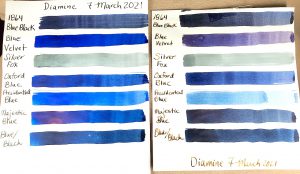


 Shopping Cart
Shopping Cart




